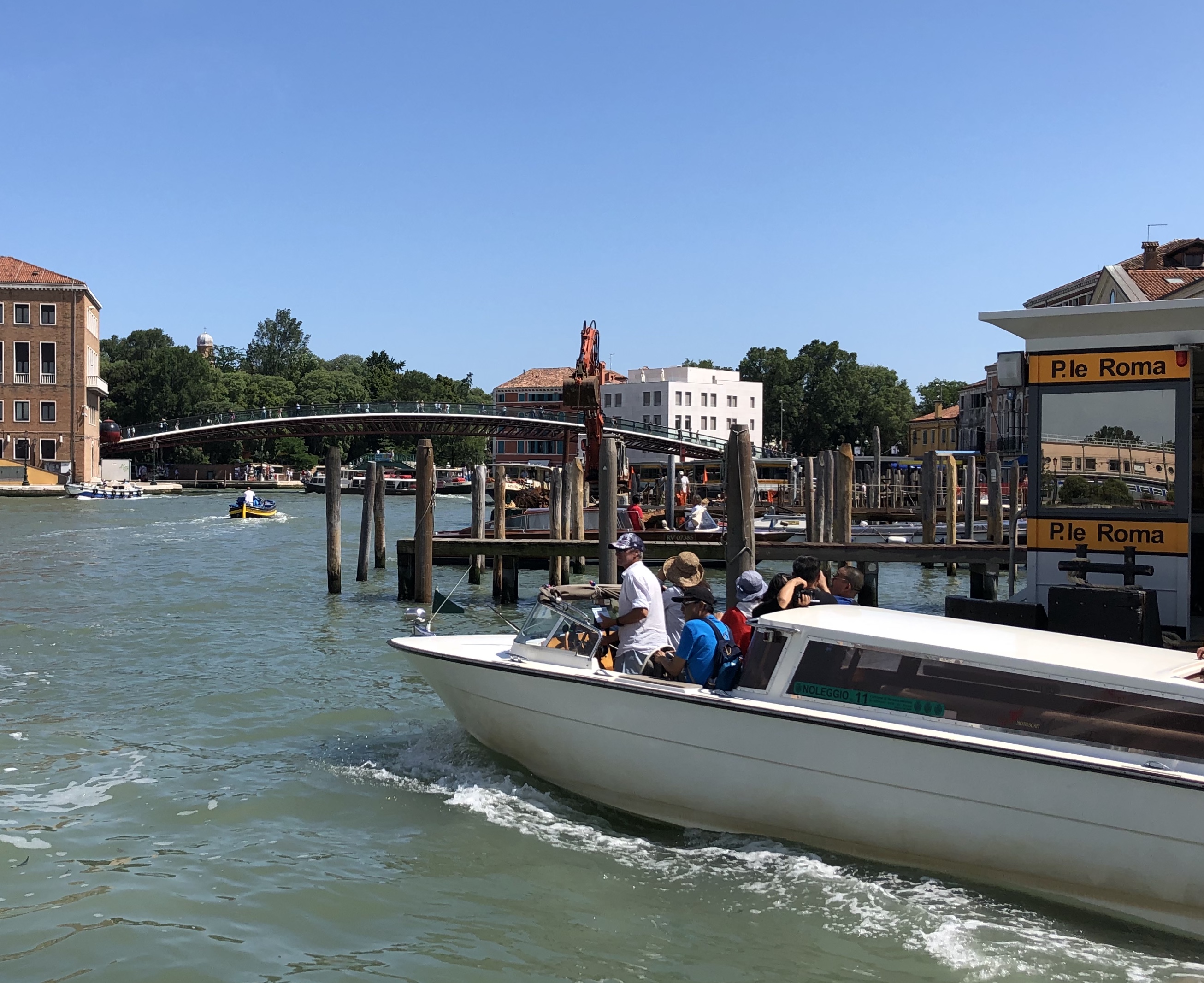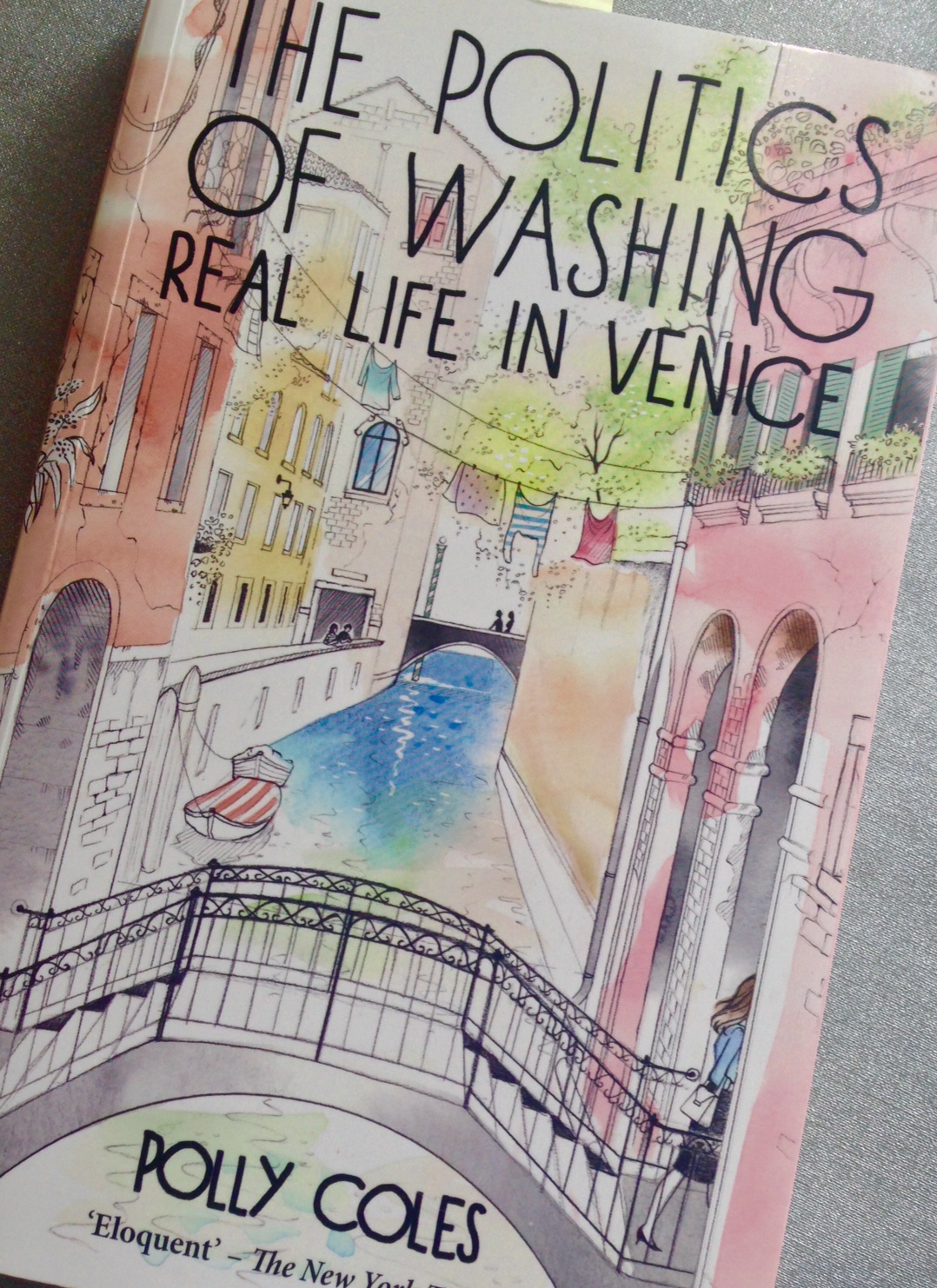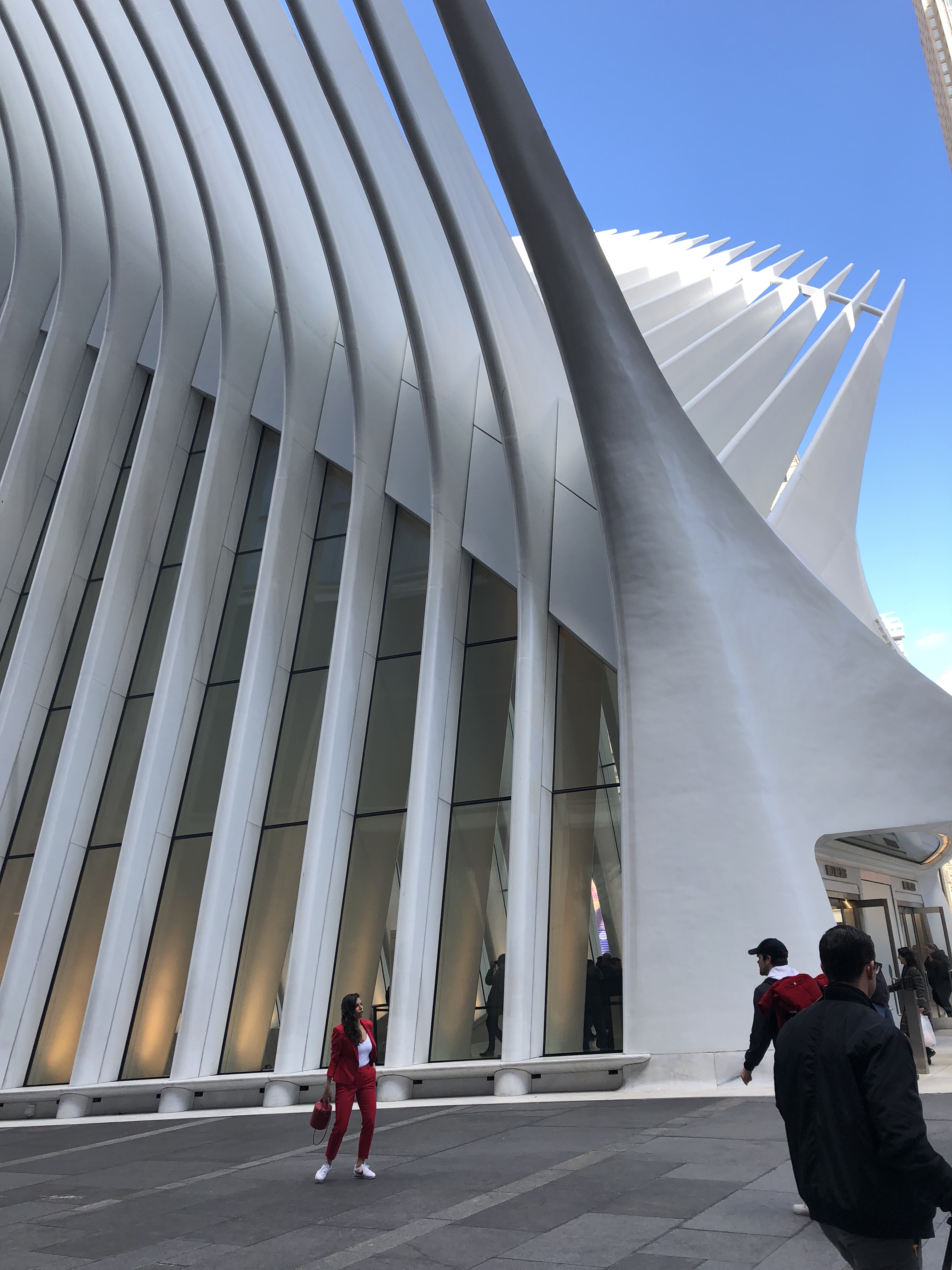This past June, I returned to Venice, Italy for five days to visit my daughter who was serving an internship at the U.S. Pavilion of the 2019 Art Biennale. While there, my goal was to experience a few sights I had missed in 2017 when we visited while she served another internship at the Peggy Guggenheim Collection, a small modern art museum on the Grand Canal. (By the way, I plan to write a future post about her overall experience with the PGC internship. If you, your child, or your grandchild are interested in a career in art museum operations or administration, this paid internship is worth looking into.)
There were three Venice sights I missed seeing in 2017: 1) The Basilica of St. John and St. Paul (known in Italian as the Basilica dei Santi Giovanni y Paolo); 2) The Venetian Ghetto (where Jews were compelled to live starting in 1516 and the origin of the English word ghetto); and 3) The Constitution Bridge (known in Italian as the Ponte della Costituzione).
On the last full day of my visit in June, my daughter and I took a vaporetto to Cannaregio, the part of Venice where the Jewish Ghetto and the Ponte della Costituzione are located.

I had first learned of the famous bridge, one of four pedestrian bridges that cross from one side of the Grand Canal to the other, when I read The Politics of Washing: Real Life in Venice. This book, written by Venetian transplant Polly Coles, reveals the daily routines of ordinary Venetians who have made the lagoon city their home. (What’s it like to live in one of the most heavily touristed cities in the world? Read this book. Where are the schools, the hospital, the post office? Read this book.)
Within one chapter of her book, Coles tells of her own experience with the infamous pedestrian bridge designed by Spanish architect Santiago Calatrava.

I first learned of Calatrava when we visited “Sculpture into Architecture,” a 2005 exhibition of the artist’s work at the Metropolitan Museum of Modern Art in New York City. The architect’s unusual skeletal forms intrigued me and still do today. For example, the Oculus transit hub near NYC’s One World Trade and the 9/11 Memorial & Museum is one of Calatrava’s more recent U.S. designs. The Oculus’ soaring bird-like structure is a fitting symbol of recovery and growth for the formerly devastated Ground Zero area.

However in Venice, Calatrava’s bridge is a controversial piece of architecture that continues to gain attention today even though it was completed in 2008. Indeed, its troubles started long before the current ones. For example, during its construction, the bridge was budgeted to cost 7 million Euro, but wound up costing 11.6 million Euro. In addition, several delays were required during its construction.
Moreover, other problems have come to light since its construction and subsequent use. These have added to the bridge’s notoriety. Some of these problems include:
- Limited accessibility for the disabled
- Its modern design that conflicted stylistically with the city’s historic architecture
- Its relative close proximity to other bridges that cross the canal, of which there are four in total
- Glass panels that pedestrians walk on, which become very slippery in rain and even fog

In addition to the slippery surface, because so many tourists (and residents, alike) carry wheeled luggage over the bridge, the glass panels have worn down, which has caused damage to the panels and to pedestrians alike, if they should fall.
So how was my walk across Calatrava’s Constitution Bridge?
Let’s just say that I was glad it was dry the day we ventured across… it was slick even then. (But let me tell you… the marble steps on nearly every other Venetian bridge are slick, too. On these bridges –and there are hundreds across the city– I had to take care to avoid the worn-down, curved edge of each step where I had nearly fallen more than once.)
On Calatrava’s bridge, there is a narrow walkway of another material (stone? concrete?) you can step across on. And truth be told, that optional surface was more comfortable to use even though it was only a strip the width of a narrow sidewalk positioned in the middle of the walkway, far from a handrail.
But still, I will say this about the Constitution Bridge: it. is. elegant.
Its long arch gracefully extends across the canal. If you have the chance to take the lengthy stroll across it, do. Despite its controversy, the bridge is beautiful, simplistic, and a refreshing contemporary note amidst Venice’s historic facades.
It is also officially crossed off my bucket list. Been there. Done that.

One reply on “Stepping Across a Controversy in Venice”
[…] reading! Check out my Italy (Venice) category for several more posts (Jewish Ghetto, the hospital, Calatrava Bridge, etc.) about Venice… a city I hope to visit a third time when travel opportunities return. I […]
LikeLike